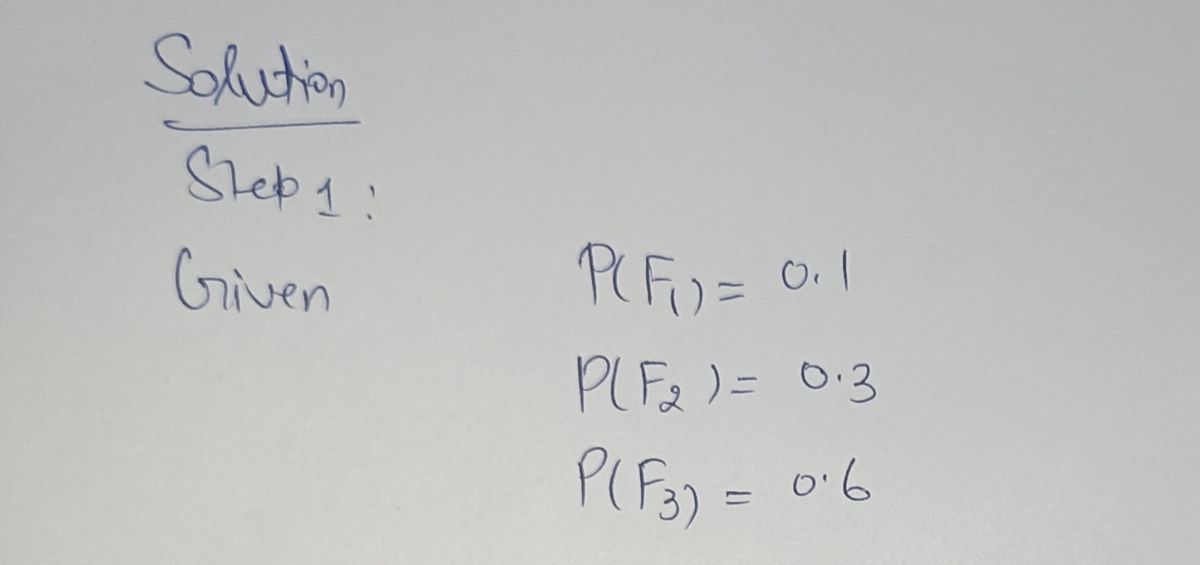3 A break in an electric circuit (event A) will occur if at least one of the three independent components C₁, C2, C3, connected in series is out of order. Calculate the probability of the event A that the break will occur, provided components' failures may take place with respective probabilities P(F₁) = 0.1, P(F₂) = 0.3, and P(F3) = 0.6. (F₁, F2, F3 denote the events that the respective components C₁, C₂, C3 fail.) Hint: Calculate the probability that none of the components fail (events F₁, F₂, F3), use independence to find P(AC). Then find P(A).
3 A break in an electric circuit (event A) will occur if at least one of the three independent components C₁, C2, C3, connected in series is out of order. Calculate the probability of the event A that the break will occur, provided components' failures may take place with respective probabilities P(F₁) = 0.1, P(F₂) = 0.3, and P(F3) = 0.6. (F₁, F2, F3 denote the events that the respective components C₁, C₂, C3 fail.) Hint: Calculate the probability that none of the components fail (events F₁, F₂, F3), use independence to find P(AC). Then find P(A).
A First Course in Probability (10th Edition)
10th Edition
ISBN:9780134753119
Author:Sheldon Ross
Publisher:Sheldon Ross
Chapter1: Combinatorial Analysis
Section: Chapter Questions
Problem 1.1P: a. How many different 7-place license plates are possible if the first 2 places are for letters and...
Related questions
Question
Please keep in mind independence in terms of probability when answering this question.

Transcribed Image Text:3
A break in an electric circuit (event A) will occur if at least one of the three independent
components C₁, C2, C3, connected in series is out of order. Calculate the probability of the event
A that the break will occur, provided components' failures may take place with respective
probabilities P(F₁) = 0.1, P(F₂) = 0.3, and P(F3) = 0.6. (F1, F2, F3 denote the events that the
respective components C₁, C2, C3 fail.)
Hint: Calculate the probability that none of the components fail (events Fº, F², F3), use independence
to find P(Ac). Then find P(A).
Expert Solution
Step 1
Solution

Step by step
Solved in 2 steps with 2 images

Recommended textbooks for you

A First Course in Probability (10th Edition)
Probability
ISBN:
9780134753119
Author:
Sheldon Ross
Publisher:
PEARSON


A First Course in Probability (10th Edition)
Probability
ISBN:
9780134753119
Author:
Sheldon Ross
Publisher:
PEARSON
